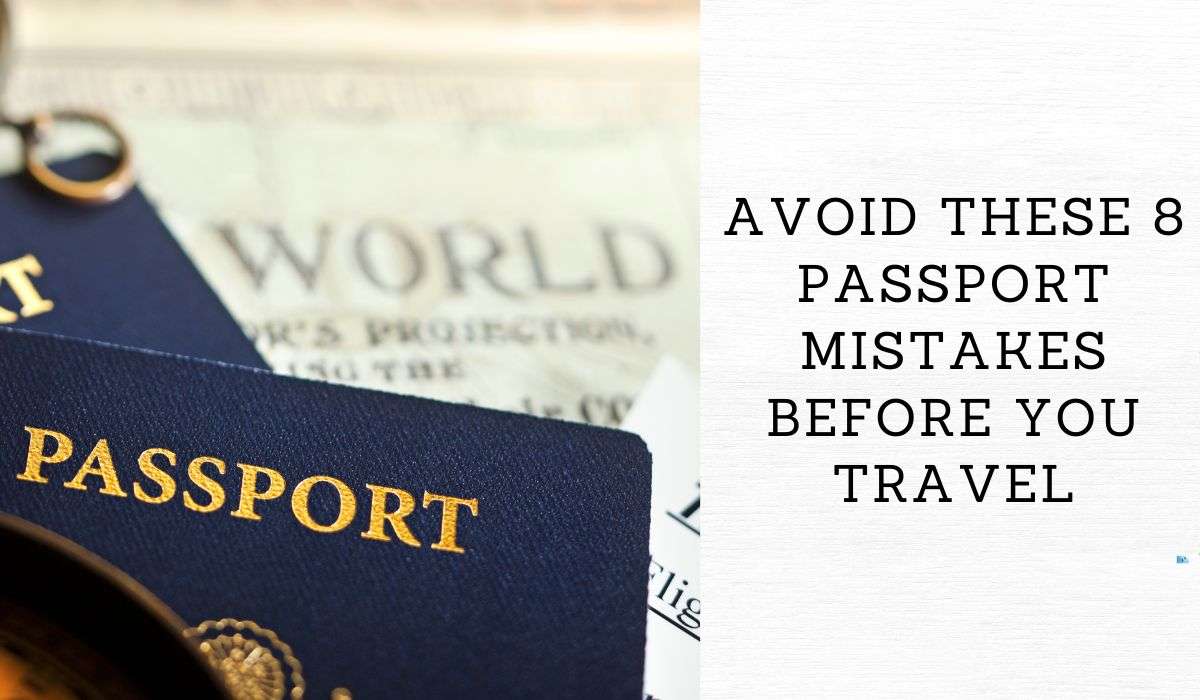8 Passport Mistakes That Can Ruin Your Trip
Contents

Avoid These 8 Passport Mistakes Before You Travel
Traveling can be one of life’s greatest joys, but nothing can put a damper on your plans like an issue with your passport. From minor damage to overlooked details, your passport’s condition is more important than you might realize. In this guide, we’ll delve into the most common passport mistakes that can lead to denied entry and how to avoid these pitfalls to ensure a smooth travel experience.
Understanding the Importance of Your Passport
Your passport is more than just a travel document; it is an essential piece of identification that verifies your identity and citizenship when crossing international borders. Airlines and border control officials rely heavily on the integrity of your passport to validate your travel eligibility.
Why Passport Condition Matters
A passport that is not in perfect condition can lead to delays, denied boarding, or even refusal of entry at your destination. This is because:
- Security Concerns: Damaged passports can be seen as security risks or signs of tampering.
- Verification Challenges: Officials need to verify your identity quickly and efficiently; any damage that impedes this process can cause complications.
Common Passport Mistakes to Avoid

Avoid These 8 Passport Mistakes Before You Travel
Before you embark on your journey, it’s crucial to conduct a thorough check of your passport to avoid any last-minute issues. Here are eight mistakes that could jeopardize your travel plans:
1. Discolouration or Damage
- What to Check: Look for water damage, stains, or any discoloration on the cover or pages. These can weaken the document and make it unacceptable for travel.
- Prevention: Keep your passport in a waterproof cover and avoid exposing it to liquids or extreme temperatures.
2. Tearing of Passport Numbers
- What to Check: Inspect the pages for any tears, particularly where passport numbers are printed, as these are critical for identity verification.
- Prevention: Handle your passport carefully, especially when inserting or removing it from protective sleeves.
3. Hard-to-Read Security Details
- What to Check: Ensure that all printed details, including your name, date of birth, and passport number, are clear and legible.
- Prevention: Store your passport away from harsh sunlight and avoid folding or bending the document.
4. Missing or Loose Pages
- What to Check: Flip through your passport to ensure no pages are missing or loose, as this can suggest tampering.
- Prevention: Always store your passport in a secure, flat area when not in use.
5. Unreadable Information
- What to Check: Verify that all text and images, such as your photograph and personal details, are easily readable.
- Prevention: Keep your passport away from moisture and direct sunlight to prevent fading or smudging.
6. Peeling Laminate
- What to Check: Check the laminate on the personal details page for peeling or bubbling, which can compromise the document’s integrity.
- Prevention: Avoid exposing your passport to high humidity or heat, which can cause the laminate to peel.
7. Cracked Personal Details Page
- What to Check: Look for cracks or breaks on the personal details page, as these can make the passport unacceptable for travel.
- Prevention: Protect your passport in a rigid cover to prevent physical damage.
8. Visible Chip Antenna
- What to Check: For biometric passports, ensure the chip antenna is not visible through the endpaper or personal details page.
- Prevention: Handle your passport carefully to prevent bending or other damage that might expose the chip.
Additional Passport Considerations

Avoid These 8 Passport Mistakes Before You Travel
Beyond checking for physical damage, there are other important aspects to consider to ensure your passport is ready for travel:
Expiry Date
- What to Check: Confirm that your passport is valid for at least six months beyond your travel dates, as many countries require this for entry.
- Prevention: Renew your passport at least nine months before it expires to avoid last-minute hassles.
Issue Date
- What to Check: Check that your passport was issued within the last ten years, as many countries require this for entry post-Brexit.
- Prevention: If your passport is nearing the ten-year mark, plan to renew it well in advance of your trip.
Children’s Passports
- What to Check: Ensure children’s passports meet all the above criteria, as they typically have shorter validity periods.
- Prevention: Regularly verify the condition and expiration of your children’s passports to ensure smooth family travel.
Page Availability
- What to Check: Ensure there are enough blank pages for entry and exit stamps, as some countries require at least one or two free pages.
- Prevention: Plan for frequent renewals if you travel often to maintain sufficient blank pages.
Tips for Keeping Your Passport Safe

Avoid These 8 Passport Mistakes Before You Travel
To maintain the integrity of your passport and avoid the above issues, follow these tips:
- Use a Protective Cover: Invest in a high-quality passport cover to protect it from physical and environmental damage.
- Store Securely: Keep your passport in a secure, dry location when not traveling, and avoid placing it in areas prone to spills or damage.
- Regular Inspections: Periodically review your passport for any signs of damage or wear, allowing you to address issues promptly.
Conclusion
Your passport is your ticket to the world, and maintaining its condition is crucial for smooth travel. By avoiding these common mistakes and taking proactive steps to protect your passport, you can ensure that nothing stands in the way of your next adventure. Don’t let simple oversights derail your plans—inspect, protect, and travel with peace of mind.

























